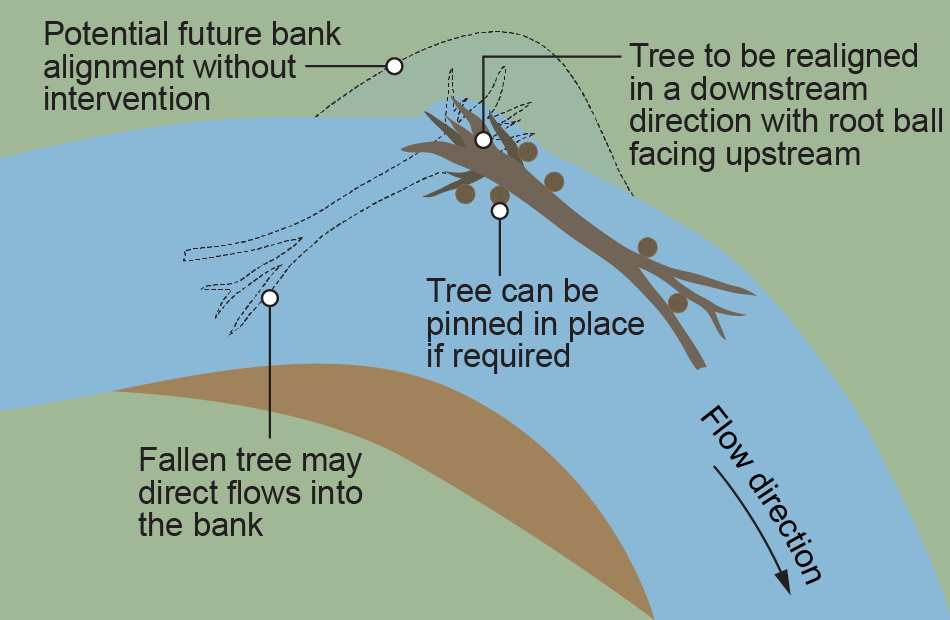|
|
Instream wood managementInstream wood management involves the realignment, relocation and/or removal of instream large wood (> 0.1 metre in diameter and 1 metre in length). In general, it is strongly encouraged to leave instream wood where it is. Instream large wood should only be managed if it has collected to the extent where it threatens infrastructure, or it is directing flows into an exposed bank causing unacceptable erosion. The general aim of managing instream large wood should be to manage the risk that it poses rather than its removal. Therefore, the realignment and relocation of instream wood are preferred management methods. The removal of instream wood should be the last resort. In some high risk circumstances removal may be acceptable, especially if it is an introduced species. These species may not provide the same habitat, hydraulic or geomorphic benefit as native timber. Potential benefits from this intervention:
Potential negative implications from this intervention:
Intervention considerations:
Additional informationPublications: Brooks, A. 2006. Design guideline for the reintroduction of wood into Australian streams. Land & Water Australia. Canberra. Price, P. and Lovett, S. 1999. Riparian Land Management Technical Guidelines. LWRRDC. Canberra. Zhang, N. and Rutherfurd, I.D. 2020. The effect of instream logs on river‐bank erosion: Field measurements of hydraulics and erosion rates. Earth Surface Processes and Landforms, 45(7), pp.1677-1690. Last updated: 10 June 2022 This page should be cited as: Department of Environment, Science and Innovation, Queensland (2022) Instream wood management, WetlandInfo website, accessed 8 May 2025. Available at: https://wetlandinfo.des.qld.gov.au/wetlands/management/rehabilitation/rehab-process/step-4/intervention-options/instream-wood-management-mod.html |

 — Department of the Environment, Tourism, Science and Innovation
— Department of the Environment, Tourism, Science and Innovation


